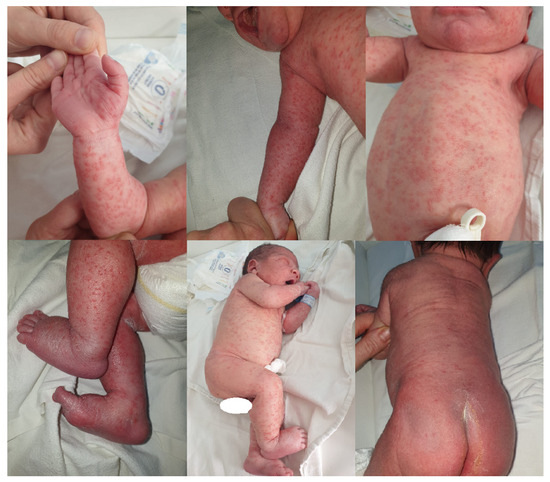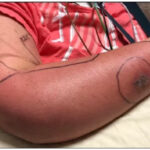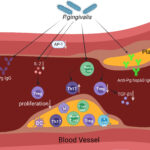Sepsis of the newborn, or neonatal sepsis, refers to a life-threatening systemic infection occurring in infants within the first 28 days of life. It remains a leading cause of neonatal morbidity and mortality worldwide, particularly in low-resource settings. Prompt identification and intervention are vital to prevent complications such as multi-organ failure, neurodevelopmental impairment, or death.

Classification of Neonatal Sepsis: Early vs. Late Onset
Neonatal sepsis is categorized based on the timing of symptom onset:
- Early-Onset Sepsis (EOS): Occurs within the first 72 hours of life; typically associated with vertical transmission of pathogens from the mother.
- Late-Onset Sepsis (LOS): Manifests after 72 hours of age; often due to nosocomial or community-acquired infections.
Risk Factors Associated with Neonatal Sepsis
Early-Onset Sepsis
- Maternal intrapartum fever
- Prolonged rupture of membranes (>18 hours)
- Premature birth (<37 weeks)
- Chorioamnionitis
- Inadequate intrapartum antibiotic prophylaxis
Late-Onset Sepsis
- Prolonged hospitalization
- Use of invasive devices (e.g., central lines, ventilators)
- Parenteral nutrition
- Low birth weight (<1500g)
Common Causative Organisms
| Type of Sepsis | Typical Pathogens |
|---|---|
| Early-Onset | Group B Streptococcus, E. coli, Listeria monocytogenes |
| Late-Onset | Coagulase-negative staphylococci, Klebsiella pneumoniae, Candida albicans |
These pathogens vary by geographic region, maternal colonization status, and hospital infection control practices.
Clinical Presentation of Neonatal Sepsis
The signs of neonatal sepsis are often subtle and nonspecific:
- Temperature instability (fever or hypothermia)
- Respiratory distress
- Poor feeding
- Lethargy or irritability
- Apnea and bradycardia
- Cyanosis
- Seizures
- Hepatosplenomegaly
Due to immature immune responses, neonates may present without fever, making high clinical suspicion essential.
Diagnostic Evaluation of Neonatal Sepsis
Laboratory Investigations
- Blood culture: Gold standard for sepsis diagnosis
- Complete blood count (CBC): Neutropenia or neutrophilia, thrombocytopenia
- C-reactive protein (CRP): Elevated in inflammatory response
- Procalcitonin: Useful early marker of bacterial infection
- Lumbar puncture: Indicated if meningitis is suspected
- Urine culture: Especially in late-onset cases
Ancillary Tests
- Chest X-ray: To detect pneumonia or respiratory distress syndrome
- Electrolytes and blood gases: To evaluate metabolic disturbances
Empiric and Targeted Antimicrobial Therapy
Early-Onset Sepsis (EOS)
Empiric therapy should cover common vertical pathogens:
- Ampicillin + Gentamicin
Covers Group B Streptococcus and E. coli
Late-Onset Sepsis (LOS)
Broader empiric coverage is needed due to nosocomial exposure:
- Vancomycin + Cefotaxime or Meropenem
- Antifungal agents like Fluconazole may be added if Candida is suspected.
Antibiotics should be refined based on culture and susceptibility results within 48–72 hours.
Duration of Therapy
| Condition | Typical Duration |
|---|---|
| Culture-negative sepsis | 5–7 days (if clinical signs resolve) |
| Bacteremia (positive culture) | 10–14 days |
| Meningitis | 14–21 days or more |
Supportive Care and Monitoring
- Respiratory support: Oxygen, CPAP, or mechanical ventilation as needed
- Nutritional support: Parenteral or enteral feeds based on tolerance
- Fluid and electrolyte management
- Seizure control: If CNS involvement is present
- Monitoring: Vital signs, blood glucose, urine output, lactate levels
Prevention of Neonatal Sepsis
Maternal Strategies
- Screening and intrapartum antibiotic prophylaxis for Group B Streptococcus
- Sterile delivery practices
- Timely management of maternal infections
Neonatal Interventions
- Strict hand hygiene and aseptic technique in neonatal intensive care units (NICUs)
- Minimizing the use of invasive devices
- Probiotic supplementation (under investigation)
- Exclusive breastfeeding to enhance immunity
Prognosis and Long-Term Outcomes
Prognostic Indicators
- Poor outcomes are associated with:
- Delayed treatment
- Low birth weight
- Severe prematurity
- Multisystem organ failure
Possible Complications
- Neurodevelopmental delay
- Hearing loss
- Chronic lung disease
- Death (particularly in preterm infants with gram-negative or fungal infections)
Emerging Trends and Future Directions
- Rapid molecular diagnostics (e.g., PCR, multiplex panels) for early pathogen detection
- Biomarkers: Improved precision with novel inflammatory markers
- Vaccination: GBS vaccines under development to prevent vertical transmission
- Antibiotic stewardship: To curb resistance and reduce unnecessary antibiotic use
Neonatal sepsis is a medical emergency requiring high vigilance, early recognition, and prompt institution of antibiotic therapy. Differentiating between early- and late-onset sepsis guides targeted treatment and prevention strategies. With continued advancements in diagnostics, infection control, and neonatal care, the global burden of sepsis of the newborn can be significantly reduced.

